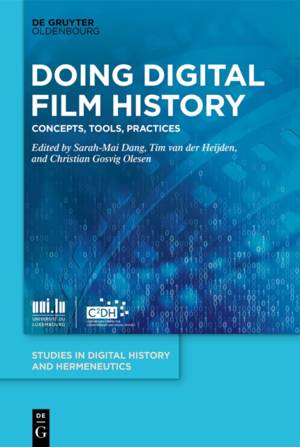
- Afhalen na 1 uur in een winkel met voorraad
- Gratis thuislevering in België vanaf € 30
- Ruim aanbod met 7 miljoen producten
- Afhalen na 1 uur in een winkel met voorraad
- Gratis thuislevering in België vanaf € 30
- Ruim aanbod met 7 miljoen producten
Zoeken
Doing Digital Film History
Concepts, Tools, Practices
€ 93,45
+ 186 punten
Omschrijving
How has the digital turn shaped the practices of film historical research and teaching? While computational approaches have been used by film historians since the 1960s and 1970s, the arrival and use of digital tools and methods in recent decades has fundamentally changed the ways we search, analyze, interpret, present, and so think and write about film history - from digital archival and curatorial practices, data-driven search, and analysis of film historical collections to the visualization and dissemination of film historical materials online. While film historians have increasingly embraced the new possibilities brought by digital technologies, their practical, epistemological, and methodological implications need further exploration. What opportunities does the digitization of film historical sources provide for film historians? What new questions can be raised by using digital methods? What new perspectives emerge from analyzing, interpreting, and visualizing film historical data at the levels of both "close" and "distant" - or "scalable" - reading and viewing? By focusing on the concepts, tools, and practices of digital film historiography, this edited volume aims to contribute to a better understanding and critical reflection on the changes and continuities of doing film history in the digital age.
Specificaties
Betrokkenen
- Uitgeverij:
Inhoud
- Aantal bladzijden:
- 449
- Taal:
- Engels
- Reeks:
- Reeksnummer:
- nr. 11
Eigenschappen
- Productcode (EAN):
- 9783111081496
- Verschijningsdatum:
- 30/12/2024
- Uitvoering:
- Hardcover
- Formaat:
- Genaaid
- Afmetingen:
- 156 mm x 234 mm
- Gewicht:
- 807 g

Alleen bij Standaard Boekhandel
+ 186 punten op je klantenkaart van Standaard Boekhandel
Beoordelingen
We publiceren alleen reviews die voldoen aan de voorwaarden voor reviews. Bekijk onze voorwaarden voor reviews.







